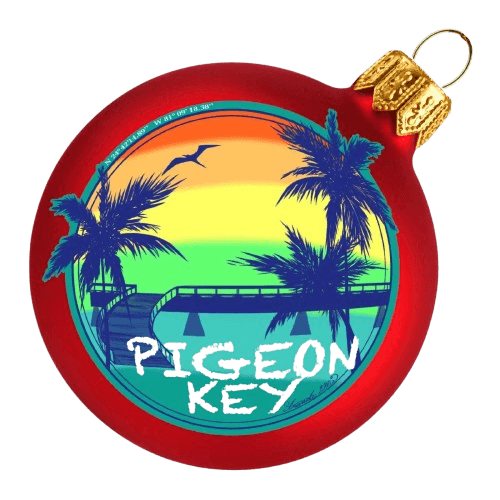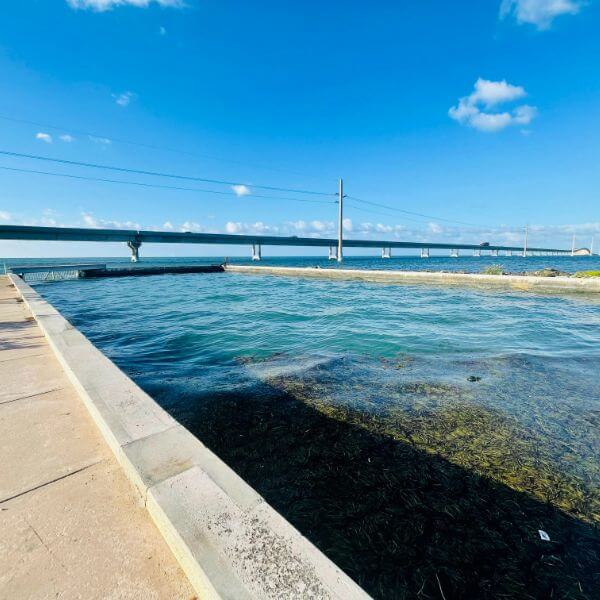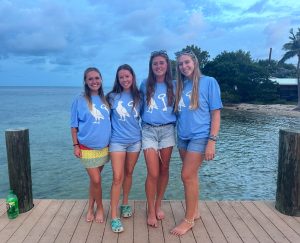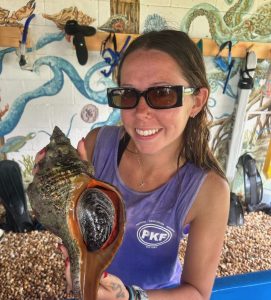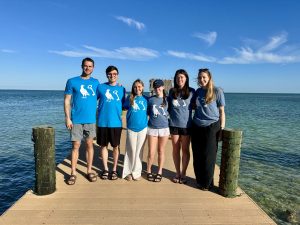In the 1950s, tourists were once able to drive onto Pigeon Key and eat at the old restaurant and tap house, and swim in our pool. The saltwater pool on the south end of the island was built in 1951 during Pigeon Key’s “glory days,” when Pigeon Key was once named “the number one rest stop in the nation.”
Today, it is home to a variety of marine organisms and is used as an educational tool rather than a swimming pool. With our new tour schedule starting June 15th (four tours a day at 10am, 11:30am, 1pm, and 2:30pm), visitors on the 1pm tour will get to feed the animals in the shark pool after their tour! No swimming or fishing is allowed in this pool for that reason!
It measures about 25 yards in length, 10 yards wide, and is about 8 feet deep at its deepest depth. It once had two large inlets into the ocean. A ladder next to the southeast corner of the pool allows for quick access for students into the ocean for snorkeling as well.
A large solar array was installed in 2013 right next to the north end of the pool, which allows for the island to receive about 95% of its power from the sun! A grant from the Tourism Development Council in 2015 allowed for the installation of a walking path above the southern portion of the pool, and a large tourism sign hangs above the pool so that passing cars on the new seven mile bridge can catch a glimpse of what Pigeon Key has to offer.
The saltwater pool was once fully enclosed to allow for tourists and visitors to take a dip and swim with tropical reef fish (specifically lots parrotfish, according to past stories) without worrying about the ocean currents. Visitors could also use the feeding stations around the pool to feed the fish as well.
When The University of Miami leased the island from 1968 to 1988 for a marine biology research station, they cut a corner out of the saltwater pool for a boat basin, allowing for their boats and research vessels to dock inside. You may have noticed there’s a gate in that corner now.
Once the Pigeon Key Foundation was established and took over the island, we installed a metal gate in a corner of the pool to allow for sharks, fish, eels, and other species to reside. It currently houses a few nurse sharks, permit, snook, tarpon, grouper, and many more fish, as well as plenty of invertebrate species like hermit crabs and sea cucumbers. For one of our marine science education programs, lucky students get the chance to feed the sharks and fish in the pool!
This allows for our marine science education camps and student groups to get a closer look at local fauna that we commonly find in and around the waters of the Florida Keys. Fishing line runs across the length and width of the pool to keep pelicans and other birds from using the pool as a food source. Again, swimming and fishing in the saltwater pool is prohibited, but there’s plenty to see in there as you walk around it. Check it out and see what you can spot next time you visit Pigeon Key!
